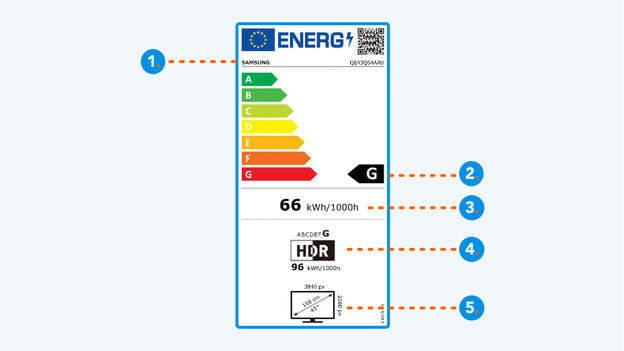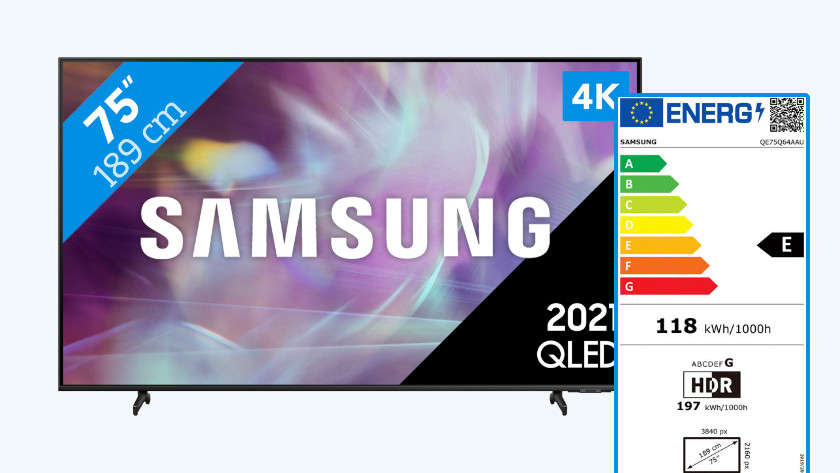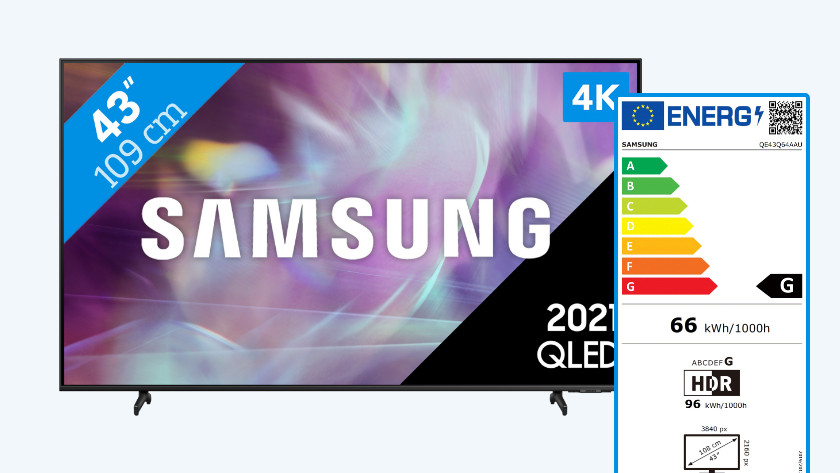
How do you choose a TV with a low energy consumption?
Keep the energy label in mind

All brand are required to give their TVs an energy label. This label will state the yearly power consumption and other useful information. The more energy-efficient the TV, the higher the energy label. The European Union imposed stricter rules in 2021, so television now have the lowest energy classes, which are F and G. That encourages television manufacturers to make their TVs more energy-efficient in the future.
You can find the following information on the energy label:
- The brand of the supplier and the product name
- The energy class
- The energy consumption per 1000 hours
- The energy consumption per 1000 hours in HDR mode
- The screen size and size of the TV
What determines the energy consumption of a TV?
In addition to the number of hours you watch TV, there are other factors that influence the energy consumption. The size of the screen also plays a part. The larger the screen, the higher the energy consumption. The brightness also affects the energy consumption. Most TV allow you to easily adjust the brightness yourself, so you can lower the energy consumption. In addition, some TVs have an energy-saving mode, like an Eco mode or movie image mode.




